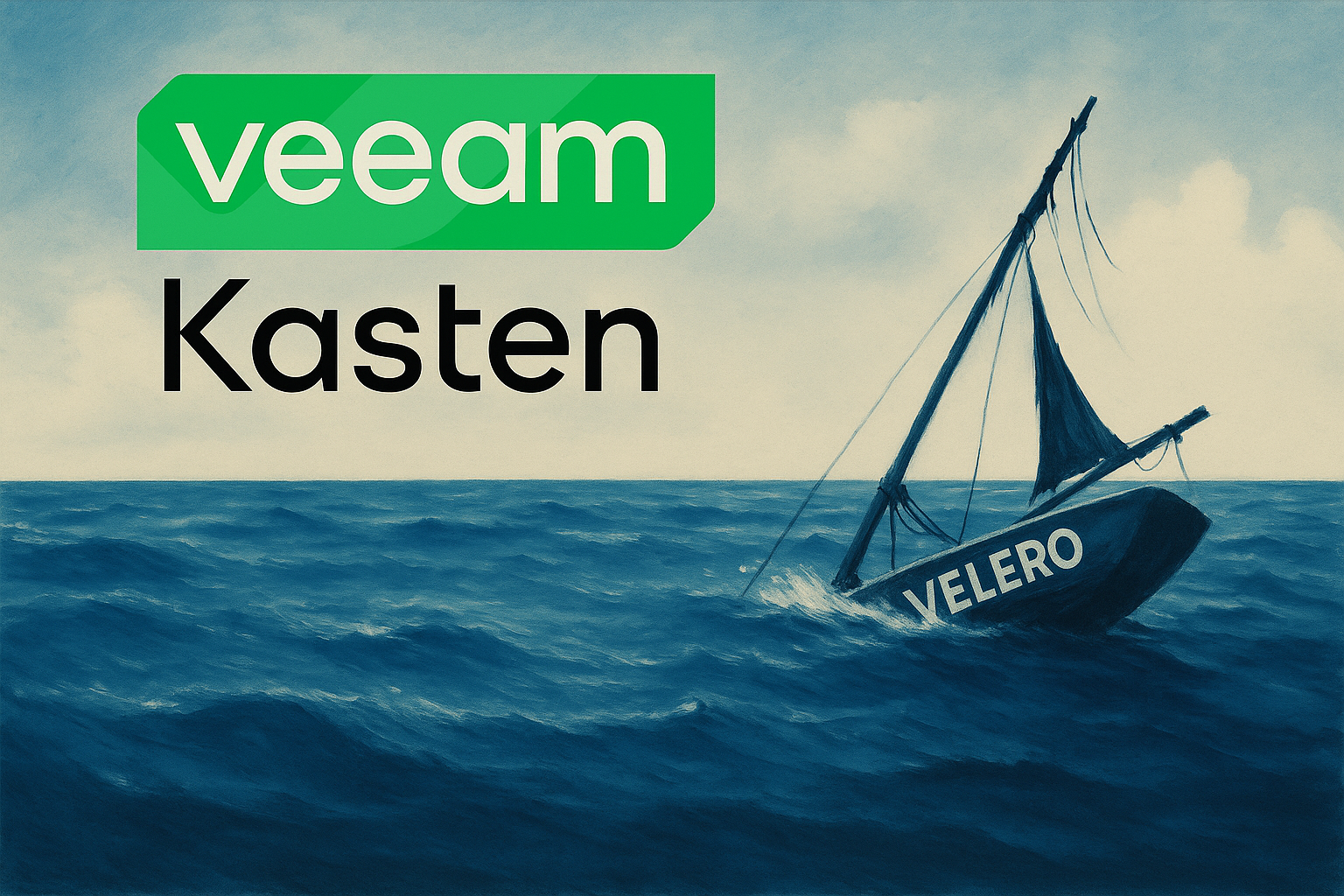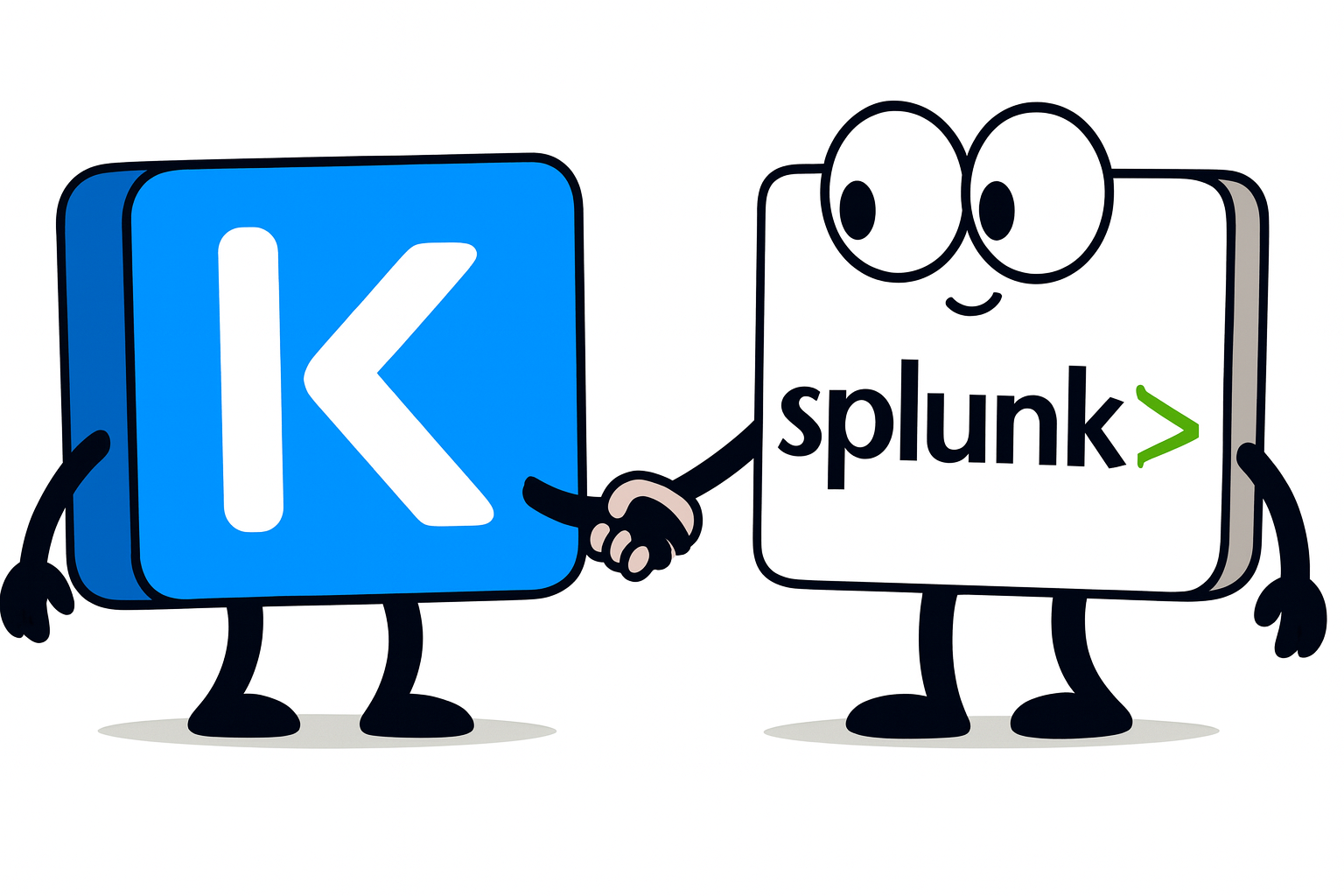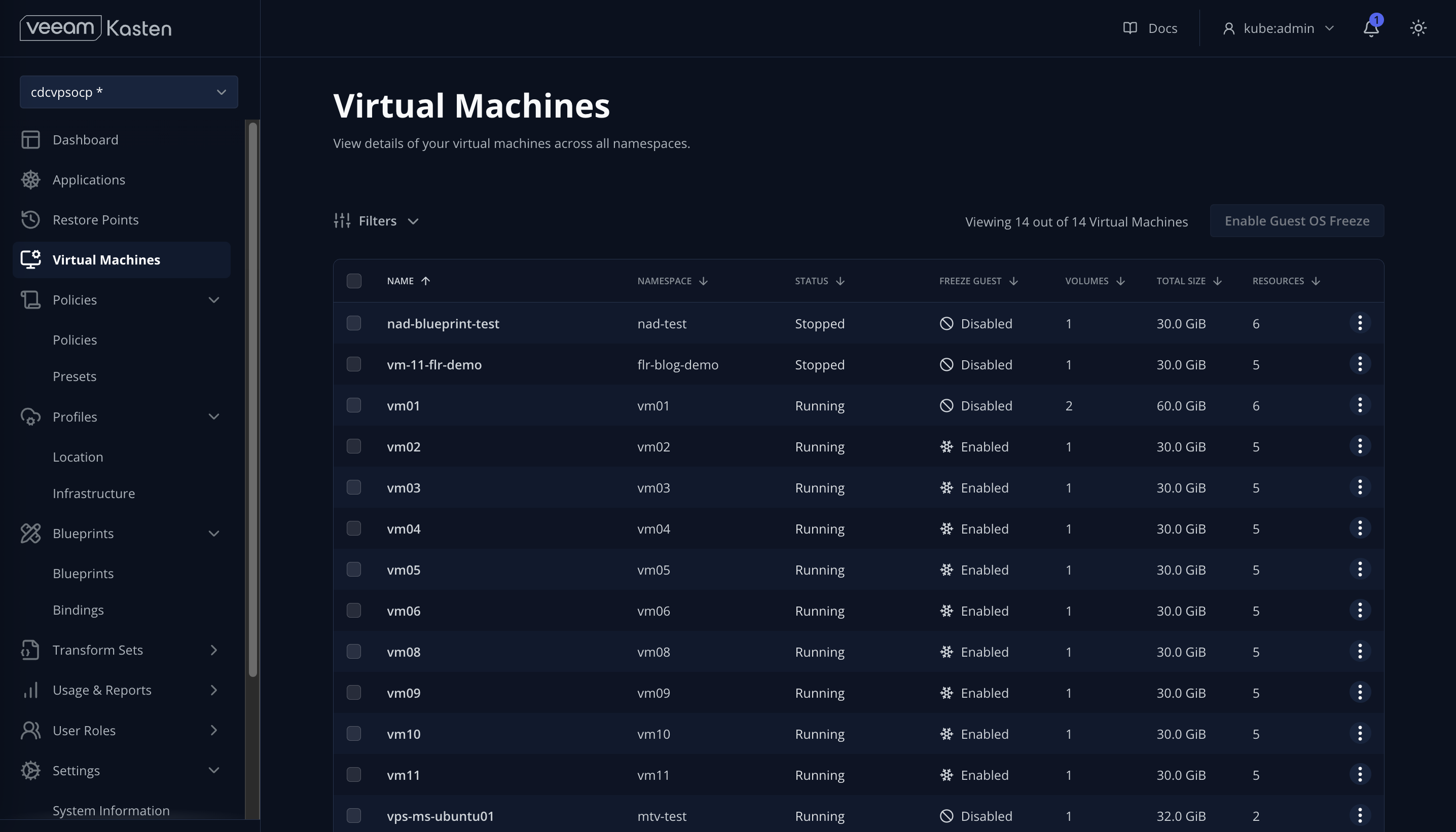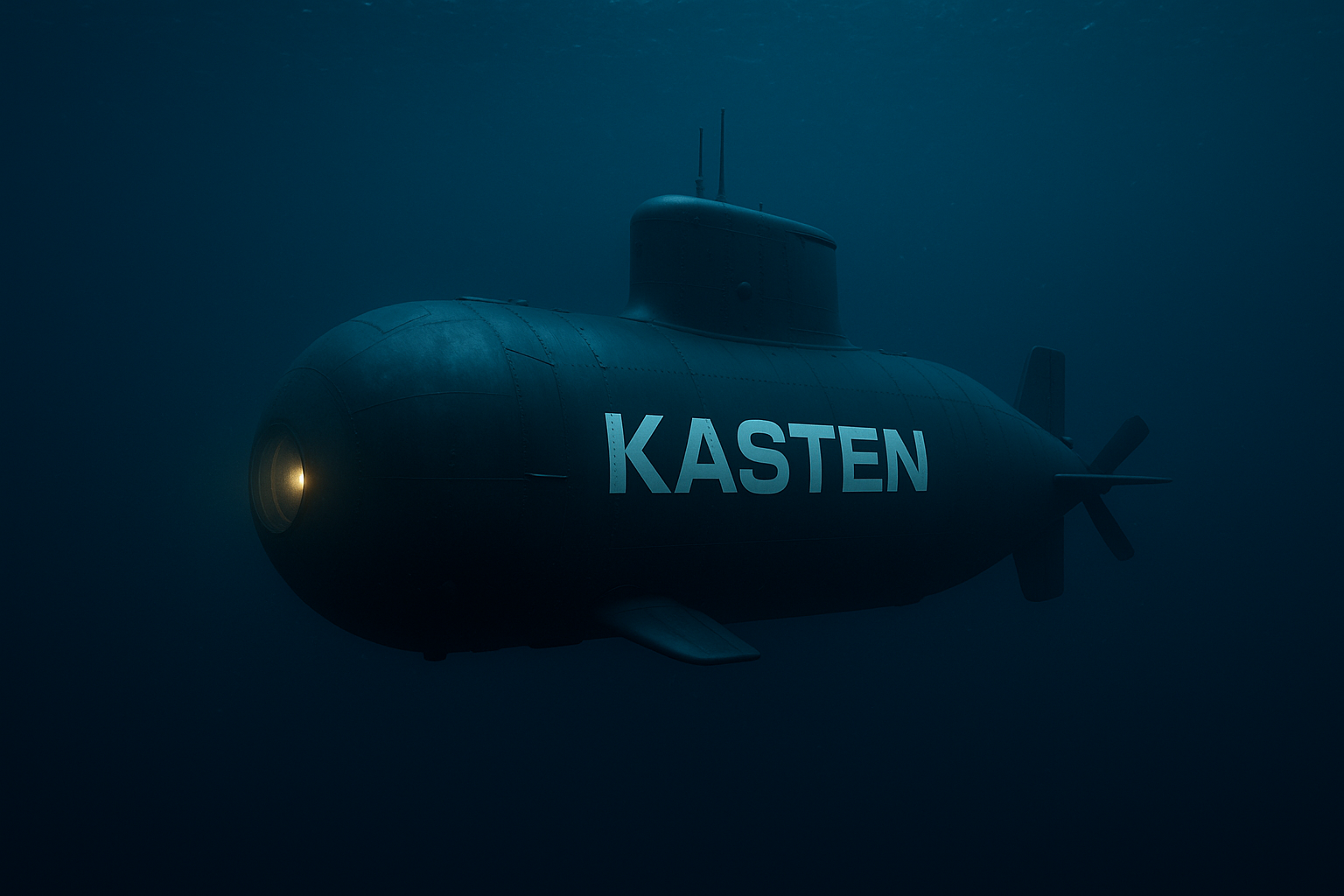Setting Up PostgreSQL with Bitnami Helm Chart
First, let’s install a PostgreSQL database using the Bitnami Helm chart:
# Create a namespace for our PostgreSQL instance
kubectl create namespace postgres-demo
# Install PostgreSQL using Helm
helm install postgres16 oci://registry-1.docker.io/bitnamicharts/postgresql \
--namespace postgres-demo \
--set auth.postgresPassword=your-secure-password
Verify that the PostgreSQL pod is running:
kubectl get pods -n postgres-demo
Creating a Database with Sample Data
Connect to the PostgreSQL instance and create a sample database with tables:
kubectl exec -n postgres-demo -it postgres16-postgresql-0 -- bash
export PGHOST='localhost'
export PGUSER='postgres'
export PGPASSWORD='your-secure-password'
psql
CREATE DATABASE testdb;
\c testdb
CREATE TABLE customers (id SERIAL PRIMARY KEY, name VARCHAR(100), email VARCHAR(100));
INSERT INTO customers (name, email) VALUES ('John Doe', 'john@example.com'), ('Jane Smith', 'jane@example.com');
SELECT * FROM customers;
Custom Blueprint for Granular Backup
Kasten K10 uses Kanister blueprints to define how applications should be backed up. For PostgreSQL, we’ll use a custom blueprint that creates individual binary dumps for each database, enabling granular restore capabilities:
apiVersion: cr.kanister.io/v1alpha1
kind: Blueprint
metadata:
name: postgres-pg-dump
namespace: kasten-io
actions:
beforeBackup:
kind: StatefulSet
phases:
- name: pgDumpall
func: KubeExec
objects:
pgSecret:
kind: Secret
name: 'postgres16-postgresql'
namespace: '{{ .StatefulSet.Namespace }}'
args:
pod: "{{ index .StatefulSet.Pods 0 }}"
namespace: '{{ .StatefulSet.Namespace }}'
command:
- bash
- -o
- errexit
- -o
- pipefail
- -c
- |
export PGHOST='localhost'
export PGUSER='postgres'
export PGPASSWORD='{{ index .Phases.pgDumpall.Secrets.pgSecret.Data "postgres-password" | toString }}'
mkdir -p /bitnami/postgresql/backups
# Back up global objects (roles, tablespaces) in plain text
pg_dumpall --globals-only > /bitnami/postgresql/backups/globals.sql
# Get a list of user databases (excluding system databases)
databases=$(psql -U postgres -t -c "SELECT datname FROM pg_database WHERE datname NOT IN ('template0', 'template1', 'postgres')")
# Back up each database in binary format
for db in $databases; do
pg_dump -U postgres -Fc $db > /bitnami/postgresql/backups/${db}.dump
done
Apply this blueprint to your cluster:
Understanding the Blueprint
The blueprint performs several key actions:
- Connects to PostgreSQL using credentials from the PostgreSQL secret
- Creates separate dumps for global objects (users, roles) in plain text format
- Identifies all user databases by querying
pg_database - Creates individual binary dumps (using the
-Fccustom format) for each database
The binary format (-Fc) is critical because it allows us to perform selective table restores later using the pg_restore tool, unlike plain SQL dumps that would require parsing.
Creating a Backup Policy in Kasten K10
With our blueprint in place, create a backup policy in Kasten K10 that uses it:
- In the Kasten K10 dashboard, navigate to Policies and click Create New Policy
- Name your policy (e.g., “PostgreSQL-Granular-Backup”)
- Select your PostgreSQL application as the target
- Choose an export target this is madatory for volume clone restore
- Under Advanced Settings > Action Hooks, select your custom blueprint and the action
beforeBackup - Choose the workload stefulset/postgres16-postgresql
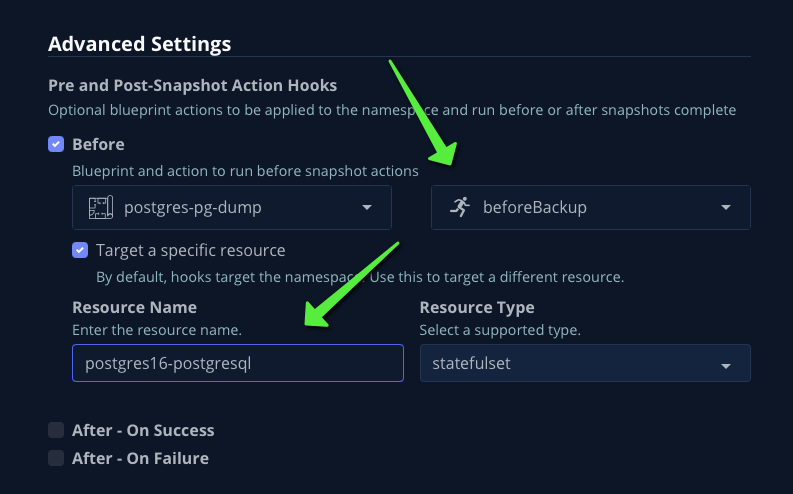
Create and run the policy.
Performing Granular Table Restore
When you need to restore a single table, Kasten K10 performs a volume clone restore that creates a new PVC with the backup date as a suffix. Here’s how to leverage this for granular restores:
- Run a restore operation from Kasten K10.
- Navigate to the restpoint you want to restore
- Select “Restore” and choose volume clone restore
- Select the pvc
- Click restore
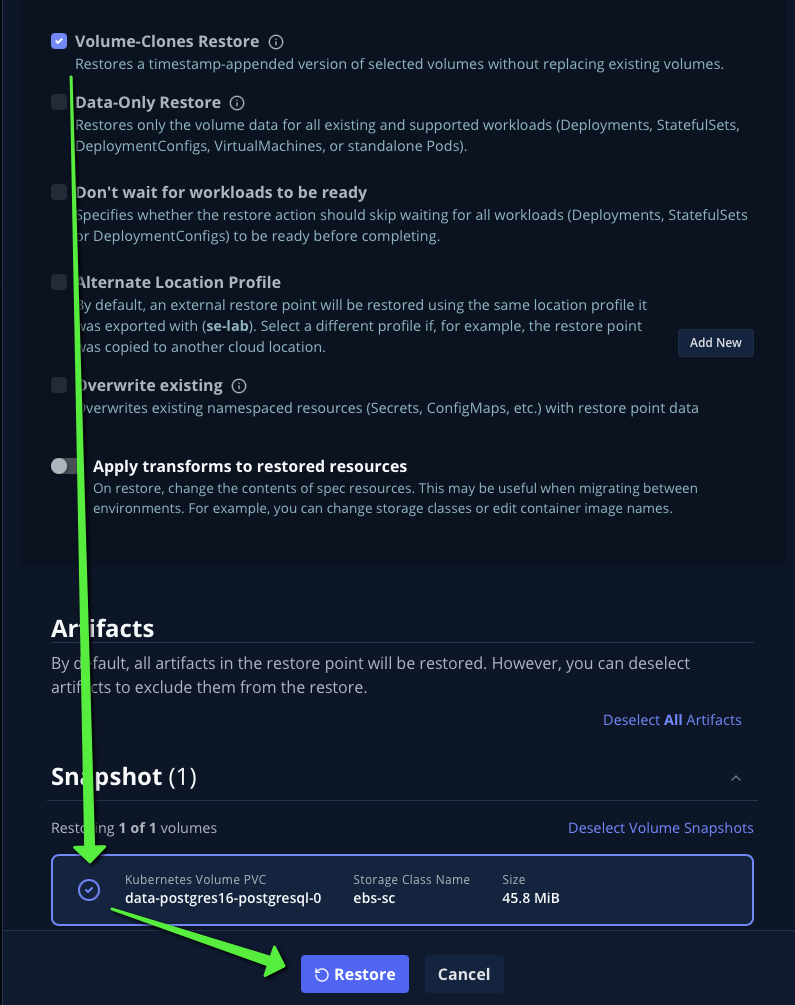
You’ll see a new PVC with a name like data-postgres16-postgresql-0-2025-05-28-15-13-41
- Patch the StatefulSet to mount the new PVC temporarily:
kubectl patch statefulset postgres16-postgresql -n postgres-demo --patch '
{
"spec": {
"template": {
"spec": {
"containers": [{
"name": "postgresql",
"volumeMounts": [{
"name": "restore-volume",
"mountPath": "/2025-05-28-15-13-41"
}]
}],
"volumes": [{
"name": "restore-volume",
"persistentVolumeClaim": {
"claimName": "data-postgres16-postgresql-0-2025-05-28-15-13-41"
}
}]
}
}
}
}'
- Restore a specific table from the binary dump:
kubectl exec -it postgres16-postgresql-0 -n postgres-demo -- bash
# Inside the pod, restore only the customers table
export PGHOST='localhost'
export PGUSER='postgres'
export PGPASSWORD='your-secure-password'
pg_restore -U postgres -d testdb --table=customers --clean /2025-05-28-15-13-41/backups/testdb.dump
- Verify the restore:
psql -d testdb -c "SELECT * FROM customers;"
- Clean up by removing the temporary volume mount:
kubectl rollout undo statefulset/postgres16-postgresql -n postgres-demo
Benefits of This Approach
This granular restore approach offers several advantages:
- Minimal downtime - only restore what you need without affecting other databases/tables
- Resource efficiency - no need to restore the entire database for a single table
- Flexibility - can restore tables across environments (development/testing)
- Data integrity - binary dumps maintain data types and constraints accurately
Conclusion
By combining Kasten K10’s volume cloning capabilities with PostgreSQL’s binary dump format, we’ve enabled granular table-level restores that minimize downtime and maximize flexibility during recovery scenarios. This approach gives database administrators the precision tools they need for efficient recovery operations.

